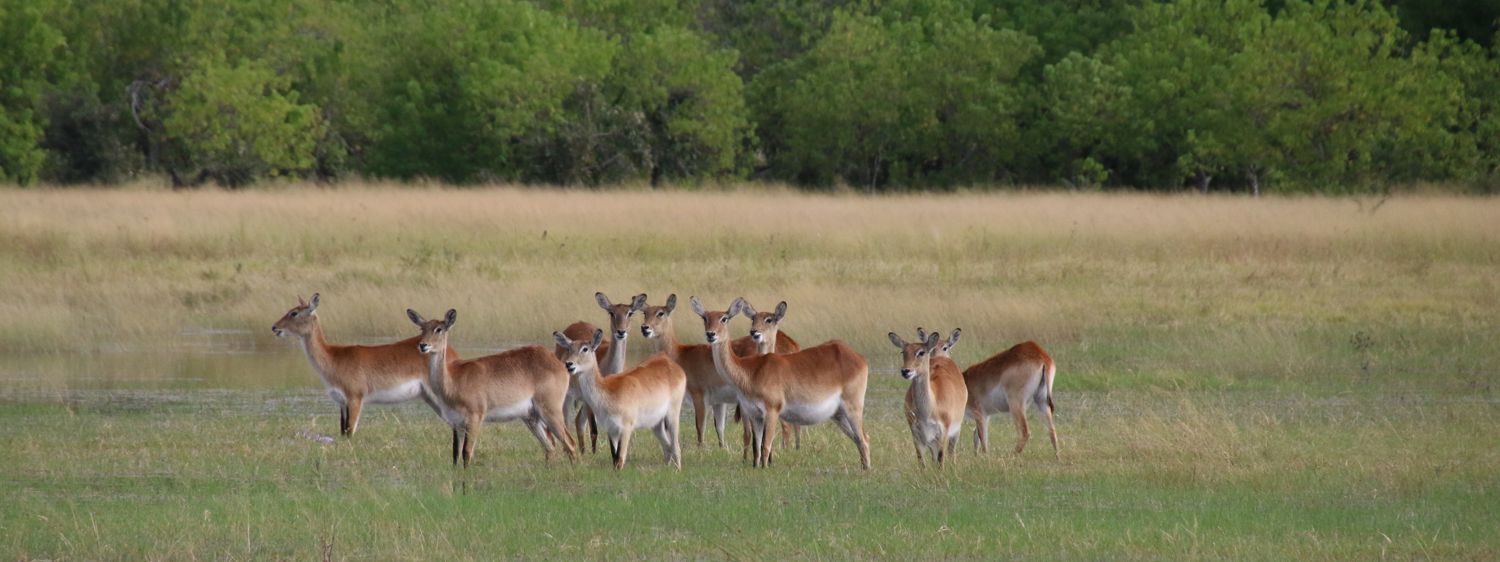Graceful and golden-hued, the Red Lechwe (Kobus leche) is a semi-aquatic antelope species that thrives in the lush floodplains and wetlands of Southern Africa. Known for its striking appearance and unique adaptations, the Lechwe is a captivating sight for wildlife enthusiasts exploring the continent’s riverine landscapes.
Appearance and Adaptations
Lechwes are medium-sized antelopes, with males reaching up to 100 cm at the shoulder and weighing around 120 kg. Their coats range from reddish-gold to chestnut brown, with a white underbelly and a distinctive white ring around the eyes. Males are easily recognized by their long, lyre-shaped horns, which curve backward and can grow up to 90 cm in length.
One of the Lechwe’s most remarkable features is its adaptation to wet environments. Their long hind legs are slightly longer than the front, giving them a powerful, bounding gait through waterlogged terrain. Their hooves are also splayed and elongated, helping them move swiftly through marshes and shallow waters where predators struggle to follow.
Behaviour and Social Structure
Lechwes are highly social animals, often seen in herds ranging from a few individuals to several hundred. These herds are typically segregated by sex, with bachelor groups and female herds accompanied by a dominant male during the breeding season.
They are most active during the early morning and late afternoon, spending much of their time grazing on aquatic grasses and sedges. When threatened, Lechwes will flee into the water, using their speed and agility to escape predators such as lions, leopards, and crocodiles.
Habitat and Distribution
Lechwes are closely tied to wetland ecosystems and are most commonly found in floodplains, swamps, and marshes. Their range includes several key regions in Southern Africa:
-
Okavango Delta (Botswana) – A UNESCO World Heritage Site and one of the best places to observe Lechwes in their natural habitat.
-
Bangweulu Swamps (Zambia) – Home to the rare Black Lechwe, a subspecies found only in this region.
-
Kafue Flats (Zambia) – Another stronghold for large Lechwe populations.
-
Caprivi Strip (Namibia) – A lush corridor where Lechwes can be spotted along the Zambezi and Kwando rivers.
Conservation Status
While the Lechwe is not currently endangered, its dependence on wetland habitats makes it vulnerable to environmental changes, such as water diversion, habitat degradation, and climate change. Conservation efforts in protected areas and community-based wildlife management programs are crucial to ensuring the long-term survival of this iconic species.



